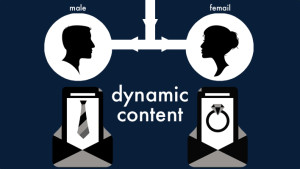Have you ever wondered what branding is, and how important it is to your business? For many, when they hear the term branding, they think of logos, taglines, key images and business colours. But branding is so much more!
The term ‘branding’ is bandied about regularly today by marketing gurus, business consultants and social media experts. And it’s difficult not to use the word when talking to business owners – for good reason!
Brand & Branding
The American Marketing Association (AMA) uses this definition to describe ‘Brand and Branding’:
“A brand is a customer experience represented by a collection of images and ideas; often, it refers to a symbol such as a name, logo, slogan, and design scheme. Brand recognition and other reactions are created by the accumulation of experiences with the specific product or service, both directly relating to its use, and through the influence of advertising, design, and media commentary.” (Added definition) “A brand often includes an explicit logo, fonts, color schemes, symbols, sound which may be developed to represent implicit values, ideas, and even personality.” (emphasis added)
The word brand or branding is a term familiar to cattle ranchers who at one time, and in some cases still, ‘brand’ their cattle stock by using a hot iron to burn their mark of ownership on their livestock.
It is a term and practice that has been used for thousands of years to permanently mark and make it easy to recognize ‘ownership’ of animals and, at various times throughout history, humans. This seemingly barbaric practice is the root of the term ‘branding’ today.
The Mark of Ownership
While branding of animals may seem barbaric in the twenty-first century, it does provide a simple yet stark image of what branding is meant to do: mark and prove ownership.
Branding can be bad, good or blurry … branding in and of itself does not guarantee anything. But when your business branding is clear, concise and recognizable across all of your online and offline platforms, it will help your business stand out. It will make it more easily recognizable by those you hope to reach. It will create a positive first impression as it is viewed over time, before customers think about or contact you.
Your brand, as indicated in the AMA definition, and especially in today’s visual-focused world, includes your logo, your colours/colour scheme, your fonts and any other design pieces that mark your brand for your business. When these design pieces are included consistently in your online and offline marketing pieces they help build your brand name recognition.
But, branding is much more than your logo and colours. While the aforementioned pieces play an important part in developing the recognizability of your brand, the next part of building your brand is just as critical: building the reputation of your brand.
It’s one thing to have a pretty face, a recognizable face. But now that I recognize your brand when I see it, what do I think of when I see it online or on a digital signboard? What do I think and feel about your business when I see your marketing materials or an advertisement, clearly marked as your brand?
What’s Behind The Brand?
And this is the next challenge in branding, making sure your business is building a reputation that will make the recognizability of your brand a good thing. So that there is congruence between who you say you are and who you are in fact.
Think of recognizable brands, local competitors and other profit and non-profit organizations that you are familiar with. What is their branding like, and do they live up to their image?
How about your business? Is it easy for customers to visit your website and social networks, view your marketing materials, see your business card and see that it is all the same business? And if the branding is easily recognizable in all of these areas, are you developing a reputation with your customers and in the marketplace that makes the recognizability of your brand a plus for your business?
This article was originally published on the GrowingSocialBiz blog.
Business Articles | Business 2 Community
(387)
Report Post






